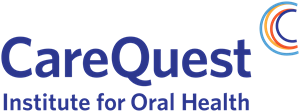Approximately 35,000 locations identified with inaccuracies related to broadband service availability
Pennsylvania Broadband Development Authority (Authority) Executive Director Brandon Carson announced today that approximately 35,000 locations have been submitted as part of a bulk challenge to the Federal Communications Commission’s (FCC) National Broadband Map. This action will prompt the FCC to work directly with internet service providers to verify the information submitted.
“Submitting these challenges to the FCC is the next step in the federal funding allocation process,” said Carson. “In addition to the Authority’s efforts to prepare a bulk challenge, we have also been urging all Pennsylvanians to review their information on the map. Submitting these inaccuracies will help ensure Pennsylvania receives adequate federal funding for highspeed internet access to unserved and underserved areas of the commonwealth.”
The FCC’s National Broadband Map displays broadband serviceable locations across the United States where fixed internet service is or can be installed. The commonwealth’s allocation of funding for broadband deployment under the federal infrastructure law is dependent upon the map being accurate. The 35,000 locations submitted as part of the bulk challenge will be reviewed by the FCC and internet service providers and the map will be updated accordingly.
Updates to the National Broadband Map will be a continual process, but this bulk challenge submission is the best opportunity for Pennsylvania’s data to be considered as part of the National Telecommunications and Information Administration’s state broadband funding allocations, anticipated in summer 2023.
The Authority plans to continue to partner with internet service providers and local communities to verify and update information to ensure that the FCC’s map has the most up-to-date information for Pennsylvania. The data will help to inform investments in broadband infrastructure across the commonwealth.
Former Pennsylvania Governor Tom Wolf announced the creation of the Authority in February 2022 to manage at least $100 million in federal aid to coordinate the rollout of broadband across Pennsylvania. The Authority was charged with creating a statewide broadband plan and distributing federal and state monies for broadband expansion projects in unserved and underserved areas of the commonwealth.
For more information about the Pennsylvania Broadband Development Authority, visit the Authority’s page on the Department of Community and Economic Development’s website and be sure to stay up-to-date with all of our agency news on Facebook, Twitter, and LinkedIn.
MEDIA CONTACT: Penny Ickes, dcedpress@pa.gov


 PCOH released the second part of a workforce report that uncovers some Pennsylvanians have wait times up to three years to receive dental treatment for tooth decay. The “Access to Oral Health Workforce Report” determined that the average wait time for a new dental appointment in PA is two months with an additional month wait to have a filling placed. Rural residents can face up to a two to three year wait. Over the last three years, Pennsylvania has been affected by a significant number of dental hygienists and dental assistants leaving dentistry as well as increases in dentist retirements. This has resulted in dwindling availability of dental appointments.
PCOH released the second part of a workforce report that uncovers some Pennsylvanians have wait times up to three years to receive dental treatment for tooth decay. The “Access to Oral Health Workforce Report” determined that the average wait time for a new dental appointment in PA is two months with an additional month wait to have a filling placed. Rural residents can face up to a two to three year wait. Over the last three years, Pennsylvania has been affected by a significant number of dental hygienists and dental assistants leaving dentistry as well as increases in dentist retirements. This has resulted in dwindling availability of dental appointments.


